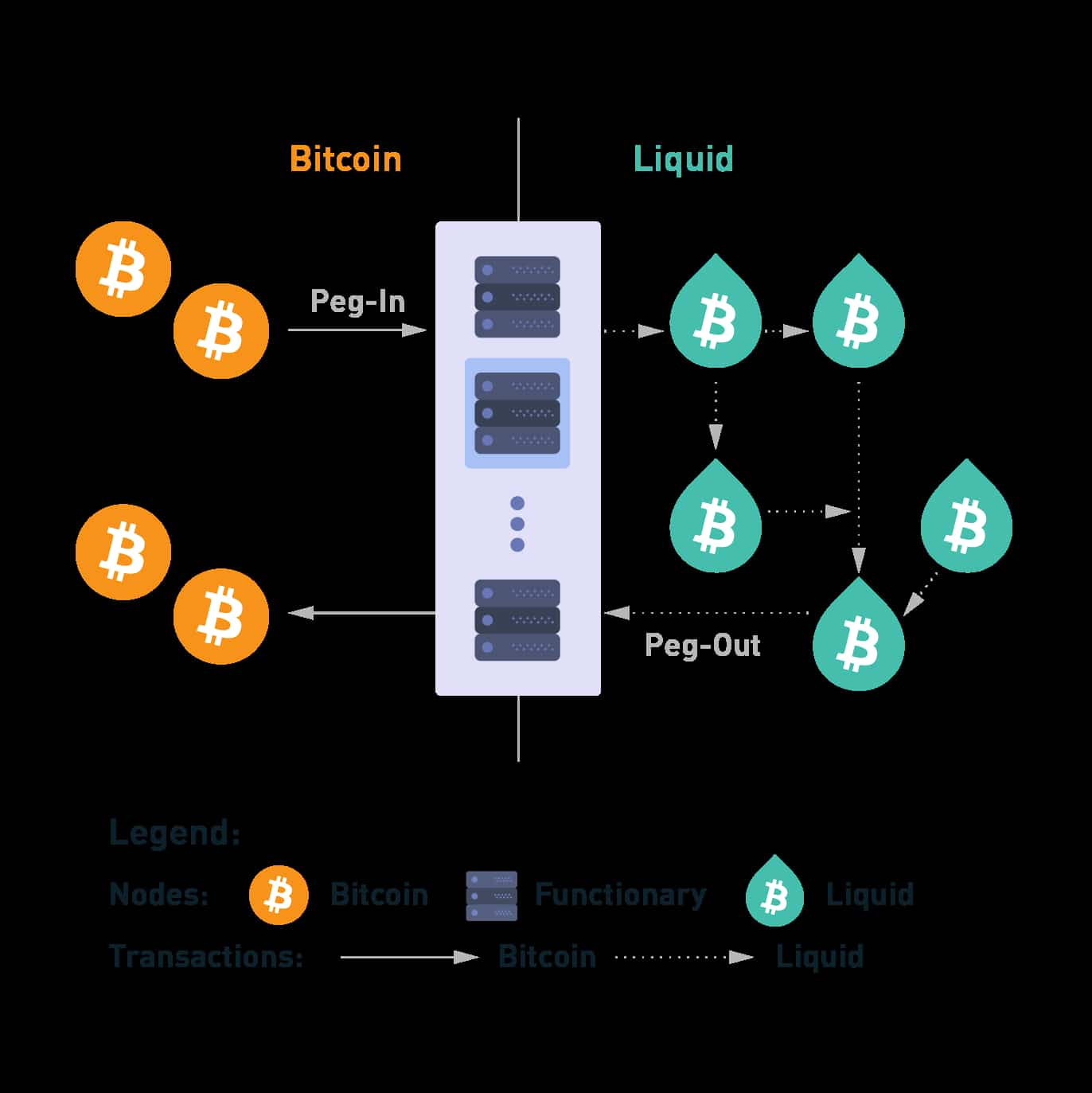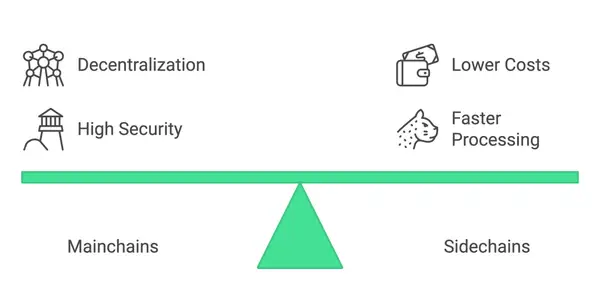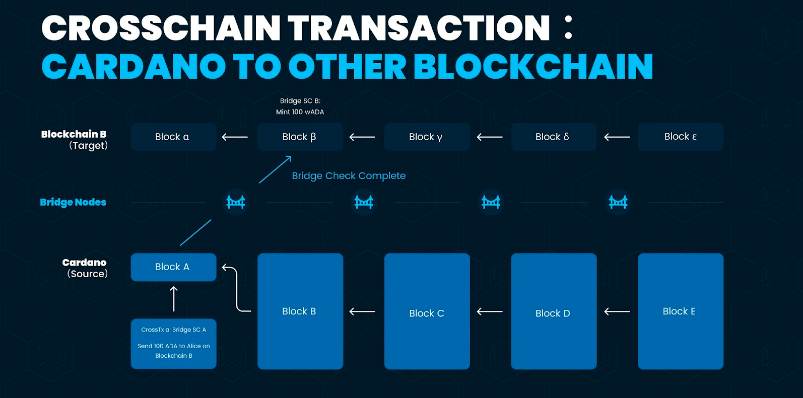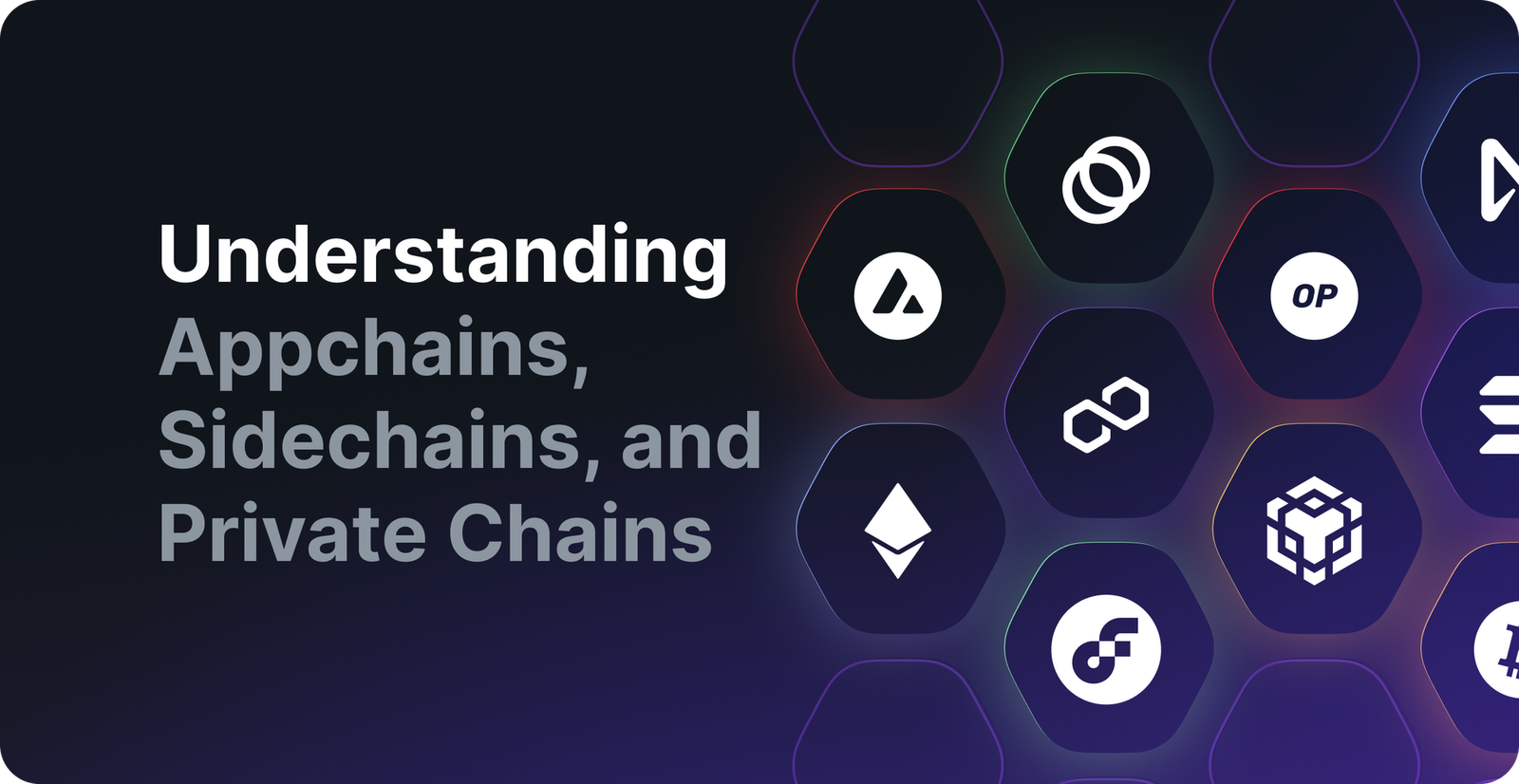Blockchain technology powers decentralized applications (DApps), but individual blockchains like Ethereum or Bitcoin often operate in isolation, limiting their potential. Interoperability—the ability for blockchains to communicate—unlocks new possibilities by connecting mainchains to sidechains. This beginner-friendly guide explains what mainchains and sidechains are, how they work together, and why interoperability matters for developers and users. Let’s explore the world of cross-chain connectivity!

What Is Blockchain Interoperability?
Interoperability allows different blockchains to share data, assets, or functionality. Imagine sending Bitcoin to an Ethereum DApp or using an Ethereum smart contract on a faster blockchain. Interoperability makes this possible by linking mainchains (primary blockchains like Ethereum) with sidechains (secondary blockchains designed for specific tasks).
Interoperability solves key blockchain challenges:
- Scalability: Sidechains process transactions faster, reducing mainchain congestion.
- Cost: Sidechains often have lower fees, making DApps more affordable.
- Specialization: Sidechains can be tailored for gaming, DeFi, or NFTs, enhancing functionality.
Mainchain vs. Sidechain: What’s the Difference?
Mainchain: The primary blockchain (e.g., Ethereum, Bitcoin) that maintains the core ledger, assets, and security. It’s highly secure but often slow and expensive due to high transaction volumes.
Sidechain: A separate blockchain linked to the mainchain, designed for specific purposes like faster transactions or specialized DApps. Sidechains rely on the mainchain for security but operate independently.
Think of the mainchain as a busy highway and sidechains as smaller roads that handle local traffic, connected by bridges for seamless travel.

How Mainchains and Sidechains Work Together
Interoperability between mainchains and sidechains relies on bridges—mechanisms that transfer assets or data between chains. Here’s how it works:
1. Asset Transfer
Users lock assets (e.g., ETH) on the mainchain, and equivalent tokens are minted on the sidechain. When done, the sidechain tokens are burned, and mainchain assets are unlocked.
2. Two-Way Peg
A two-way peg ensures secure transfers by requiring consensus between chains. For example, a smart contract on Ethereum locks ETH, while a sidechain like Polygon issues wrapped ETH (WETH).
3. Cross-Chain Communication
Bridges or oracles relay data (e.g., transaction confirmations) between chains, enabling DApps to operate across both.
This setup allows users to enjoy the mainchain’s security and the sidechain’s speed.
Popular Sidechains and Their Uses
Several sidechains enhance mainchain functionality. Here are notable examples:
- Polygon: A layer-2 sidechain for Ethereum, offering fast, low-cost transactions for DeFi and NFTs. Learn more at polygon.technology.
- Liquid Network: A Bitcoin sidechain for faster, private transactions in financial applications.
- SKALE: An Ethereum-compatible sidechain network optimized for gaming and high-throughput DApps.
These sidechains make DApps more scalable and user-friendly.
Step-by-Step: Building an Interoperable DApp
Let’s create a simple DApp that interacts with both Ethereum (mainchain) and Polygon (sidechain) to transfer tokens. This tutorial uses JavaScript, Ethers.js, and a bridge contract.
Step 1: Set Up Your Environment
Install the necessary tools:
- Node.js: Download from nodejs.org.
- MetaMask: Install from metamask.io for wallet integration.
- Ethers.js: Install via
npm install ethers. - Hardhat: For contract deployment. Install via
npm install --save-dev hardhat.
Create a new Hardhat project:
npx hardhat
npm install @openzeppelin/contracts
Step 2: Write a Bridge Contract
Create a simple bridge contract in contracts/Bridge.sol to lock and release tokens:
// SPDX-License-Identifier: MIT
pragma solidity ^0.8.0;
import "@openzeppelin/contracts/token/ERC20/IERC20.sol";
contract Bridge {
IERC20 public token;
mapping(address => uint256) public lockedBalances;
event Locked(address indexed user, uint256 amount);
event Released(address indexed user, uint256 amount);
constructor(address _token) {
token = IERC20(_token);
}
function lockTokens(uint256 amount) external {
require(token.transferFrom(msg.sender, address(this), amount), "Transfer failed");
lockedBalances[msg.sender] += amount;
emit Locked(msg.sender, amount);
}
function releaseTokens(uint256 amount) external {
require(lockedBalances[msg.sender] >= amount, "Insufficient balance");
lockedBalances[msg.sender] -= amount;
require(token.transfer(msg.sender, amount), "Transfer failed");
emit Released(msg.sender, amount);
}
}
This contract locks tokens on Ethereum and emits events for the sidechain to mint equivalent tokens.

Step 3: Deploy the Contract
Deploy the bridge contract to Ethereum’s Sepolia testnet using Hardhat. Create a deployment script in scripts/deploy.js:
const hre = require("hardhat");
async function main() {
const tokenAddress = "YOUR_ERC20_TOKEN_ADDRESS"; // Use a test token
const Bridge = await hre.ethers.getContractFactory("Bridge");
const bridge = await Bridge.deploy(tokenAddress);
await bridge.deployed();
console.log("Bridge deployed to:", bridge.address);
}
main().catch((error) => {
console.error(error);
process.exitCode = 1;
});
Run with npx hardhat run scripts/deploy.js --network sepolia. Note the contract address.
Step 4: Set Up the Sidechain (Polygon)
Deploy a similar bridge contract on Polygon’s Mumbai testnet (Polygon’s test network). Use Polygon’s bridge infrastructure (e.g., PoS Bridge) to map tokens between Ethereum and Polygon. Learn how at docs.polygon.technology.
Step 5: Create a Front-End
Build a simple React front-end to interact with the bridge. Create a new React app:
npx create-react-app bridge-dapp
cd bridge-dapp
npm install ethers
Replace src/App.js with:
import { useState } from 'react';
import { ethers } from 'ethers';
import './App.css';
const bridgeAddress = 'YOUR_BRIDGE_CONTRACT_ADDRESS';
const bridgeABI = [/* YOUR_BRIDGE_ABI */]; // From Hardhat compilation
const tokenAddress = 'YOUR_ERC20_TOKEN_ADDRESS';
function App() {
const [amount, setAmount] = useState('');
const [account, setAccount] = useState(null);
const connectWallet = async () => {
if (window.ethereum) {
const provider = new ethers.BrowserProvider(window.ethereum);
const accounts = await provider.send('eth_requestAccounts', []);
setAccount(accounts[0]);
} else {
alert('Install MetaMask!');
}
};
const lockTokens = async () => {
if (!account || !amount) return;
const provider = new ethers.BrowserProvider(window.ethereum);
const signer = await provider.getSigner();
const token = new ethers.Contract(tokenAddress, ['function approve(address,uint256)'], signer);
const bridge = new ethers.Contract(bridgeAddress, bridgeABI, signer);
await token.approve(bridgeAddress, amount);
await bridge.lockTokens(amount);
alert('Tokens locked!');
};
return (
Blockchain Bridge DApp
{!account ? (
Connect Wallet
) : (
Connected: {account} setAmount(e.target.value)}
/>
Lock Tokens
)}
);
}
export default App;
Add basic styling in src/App.css:
.App {
text-align: center;
padding: 50px;
font-family: Arial, sans-serif;
}
input {
padding: 10px;
margin: 10px;
width: 200px;
}
button {
padding: 10px 20px;
margin: 5px;
cursor: pointer;
background-color: #6200ea;
color: white;
border: none;
border-radius: 5px;
}
button:hover {
background-color: #3700b3;
}
Run the app with npm start. Connect MetaMask to Sepolia, lock tokens, and use Polygon’s bridge to mint tokens on Mumbai.
Benefits of Mainchain-Sidechain Interoperability
Interoperability enhances blockchain ecosystems by:
- Boosting Scalability: Sidechains handle high transaction volumes, freeing up the mainchain.
- Reducing Costs: Lower fees on sidechains make DApps affordable.
- Enabling Innovation: Sidechains support specialized use cases like gaming or privacy.
Users enjoy faster, cheaper DApps, while developers gain flexibility.
Challenges of Interoperability
Building interoperable systems isn’t easy. Key challenges include:
- Security Risks: Bridges are targets for hacks, as seen in some cross-chain exploits.
- Complexity: Coordinating mainchains and sidechains requires sophisticated contracts.
- Trust Assumptions: Some bridges rely on trusted validators, reducing decentralization.
Mitigate these by auditing contracts with MythX and using established bridges like Polygon’s PoS.
Other Interoperability Solutions
Besides sidechains, other approaches enhance blockchain connectivity:
- Cross-Chain Bridges: Tools like Wormhole connect unrelated blockchains (e.g., Ethereum to Solana).
- Interoperability Protocols: Polkadot and Cosmos enable cross-chain communication via parachains or IBC.
- Oracles: Chainlink provides off-chain data to multiple chains, supporting interoperability.
Explore these to broaden your DApp’s reach.
Resources for Learning More
Deepen your interoperability knowledge with these resources:
- Polygon Docs: Sidechain integration at docs.polygon.technology.
- Ethereum Scaling: Mainchain-sidechain strategies at ethereum.org.
- Blockchain Communities: Join discussions on Ethereum Stack Exchange or Polygon’s forums.
Stay curious to master cross-chain development.
Conclusion
Interoperability between mainchains and sidechains unlocks blockchain’s full potential, enabling faster, cheaper, and more versatile DApps. By building a bridge DApp with Ethereum and Polygon, you’ve seen how to connect chains practically. Keep exploring sidechains, bridges, and protocols to create innovative decentralized solutions. Share your interoperability ideas in the comments below!






















